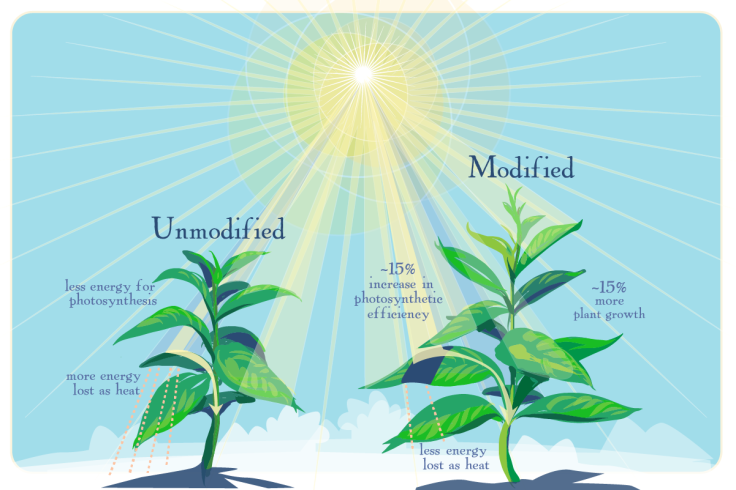Genetically Modified Crops: Gene Tweaking Boosts Photosynthesis Efficiency To Increase Crop Yield

The controversy over genetic modification of crops notwithstanding, GM techniques have so far been successfully used to create plants that are pest and disease resistant, require less water than their natural counterparts, and whose produce — fruits and vegetables — have a long shelf life.
Now, in a study published Friday in the journal Science, a team of researchers have reported another key breakthrough — one that allows plants to use sunlight more efficiently. In field trials, the scientists saw increase of up to 20 percent in the growth of tobacco plants that had been genetically tweaked to harvest more light.
Plants are autotrophs. They produce their own food through photosynthesis — a process that converts sunlight into chemical energy. However, there is a limit to how much sunlight plants’ leaves can absorb, and when they are exposed to more light than they can use, they get rid of it in the form of heat through a process known as nonphotochemical quenching (NPQ).
“But when a cloud crosses the sun, or a leaf goes into the shade of another, it can take up to half an hour for that NPQ process to relax,” University of Illinois’ Stephen Long, who co-led the study, explained in a statement. “In the shade, the lack of light limits photosynthesis, and NPQ is also wasting light as heat.”
In their proof-of-concept experiments, the scientists targeted three genes for proteins that are responsible for relaxing the NPQ process, with the hope that doing so would ease the protection faster. To test this idea, the team inserted copies of the three genes taken from the plant Arabidopsis thaliana into the tobacco genome.
When seedlings from these experiments were grown and exposed to sunlight, the researchers found that the modified plants showed 14 to 20 percent higher yields, and had bigger leaves and heavier roots than their unmodified counterparts.
“We don’t know for certain this approach will work in other crops, but because we’re targeting a universal process that is the same in all crops, we’re pretty sure it will,” Long said. “My attitude is that it is very important to have these new technologies on the shelf now because it can take 20 years before such inventions can reach farmer’s fields. If we don’t do it now, we won’t have this solution when we need it.”
© Copyright IBTimes 2025. All rights reserved.





















